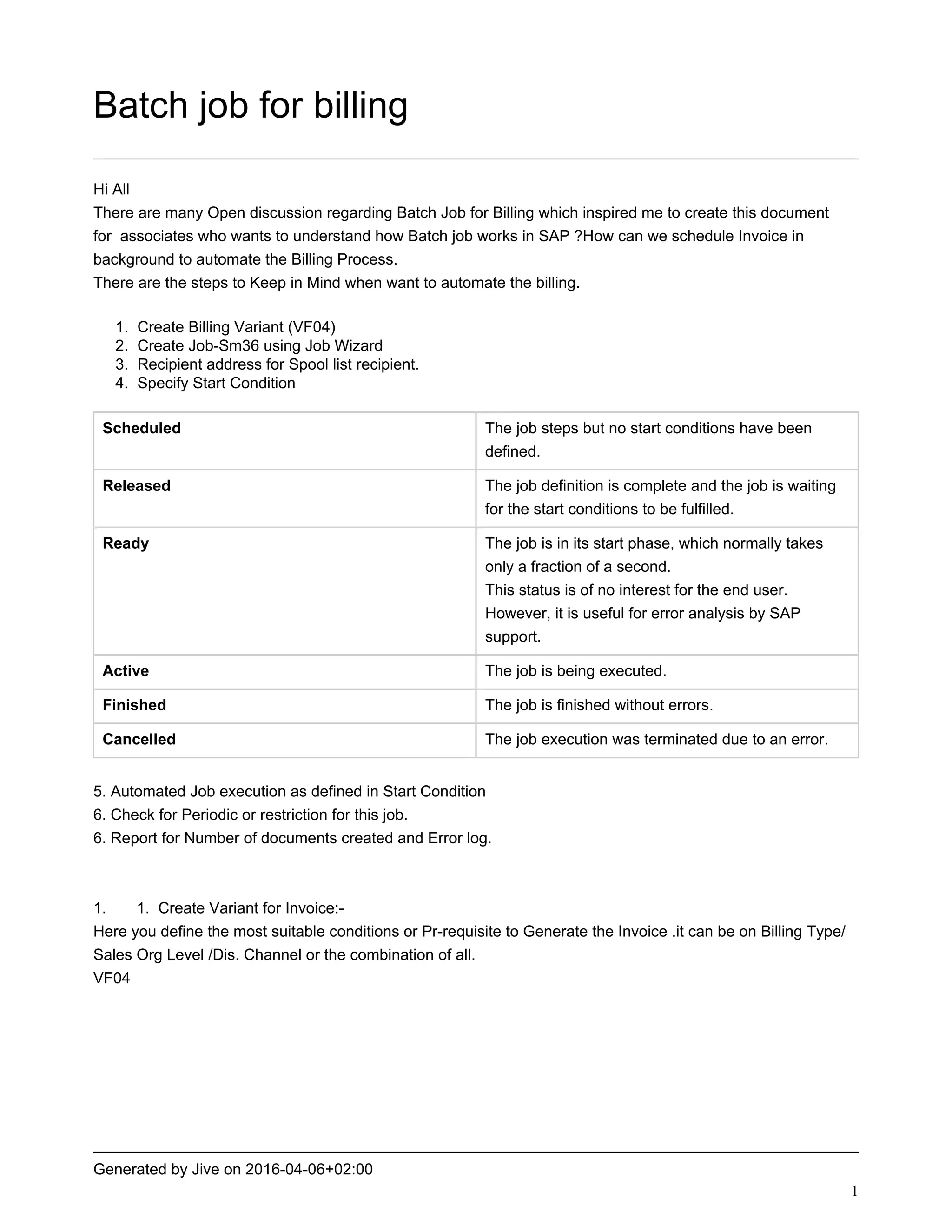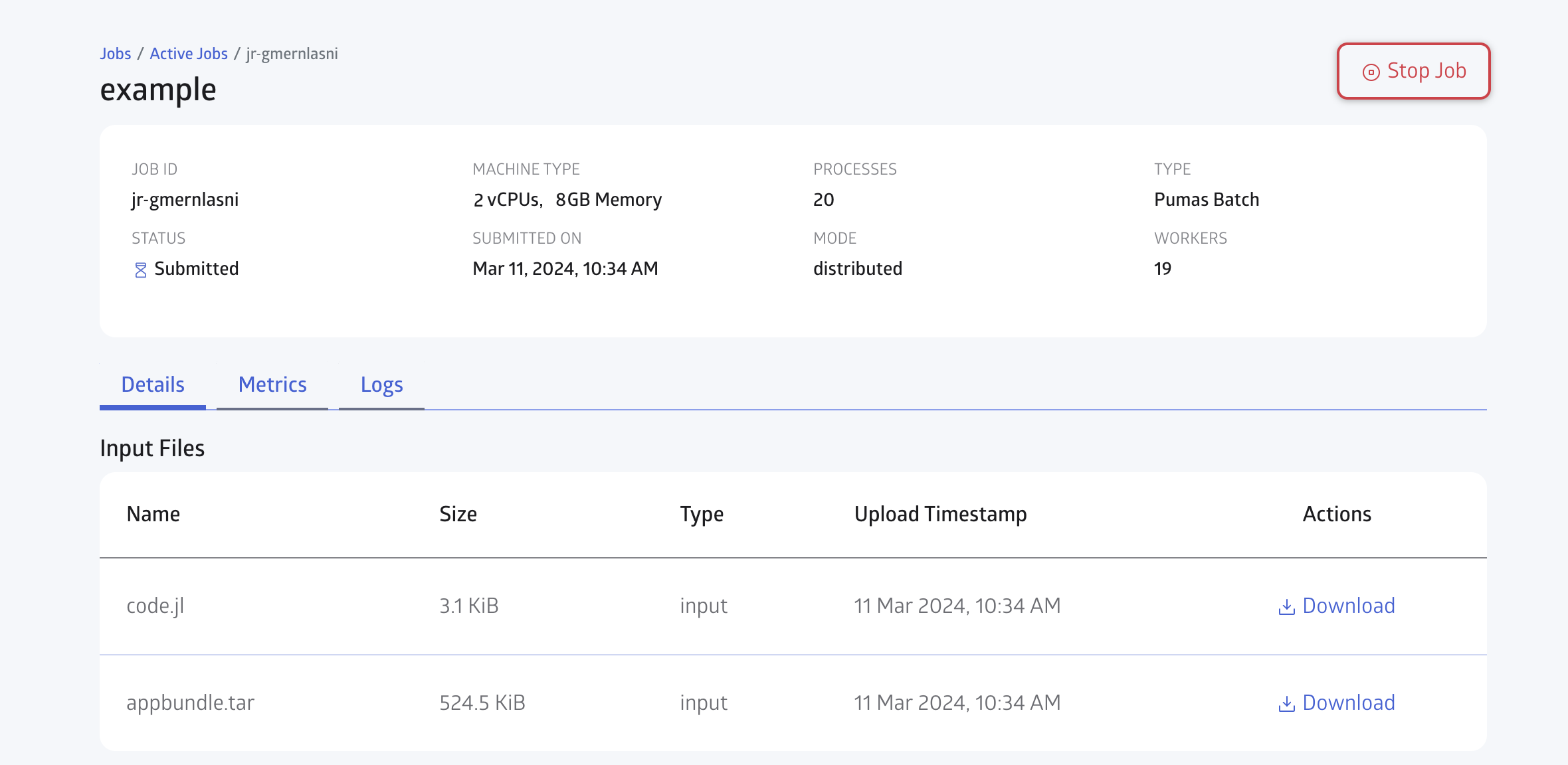Mastering RemoteIoT Batch Job Example: A Deep Dive Into Simplifying Remote Operations
RemoteIoT batch job example remote is becoming a buzzword in the tech world, and for good reason. If you're diving into the realm of IoT or managing remote systems, understanding how batch jobs work in this context is crucial. It's like having a superpower to automate repetitive tasks without lifting a finger. Imagine being able to control thousands of devices with just a few lines of code—sounds cool, right? But before we jump into the nitty-gritty, let's break down what RemoteIoT really means and why batch jobs are a game-changer.
Nowadays, businesses are leaning more towards remote operations, especially with the rise of IoT technology. The concept of RemoteIoT batch job example remote allows companies to streamline their processes, reduce manual intervention, and save time. Think about it—instead of manually updating hundreds of devices, you can schedule a batch job to handle everything for you. It's like having a personal assistant who never sleeps!
But here's the thing: not everyone knows how to harness the power of RemoteIoT batch jobs effectively. That's where this article comes in. We'll take you on a journey through the ins and outs of remote batch jobs, provide real-world examples, and even show you how to implement them. So, buckle up and get ready to level up your IoT game!
- Leighton Meesters Sizzling Allure Unveiling The Enchanting Charisma
- Movieruz Your Ultimate Guide To Streaming Movies Like A Pro
What Exactly Is RemoteIoT Batch Job Example Remote?
Let's start by defining what RemoteIoT really means. In simple terms, RemoteIoT refers to the use of Internet of Things (IoT) technology to manage and control devices remotely. When we talk about batch jobs, we're referring to a set of tasks that are executed in bulk, without requiring constant human intervention. Combining these two concepts gives us the RemoteIoT batch job example remote—a powerful tool for automating repetitive tasks across multiple devices.
Imagine you're managing a fleet of sensors spread across different locations. Instead of manually checking each sensor's status, you can create a batch job that does it for you. This not only saves time but also ensures that all devices are updated and synchronized efficiently. It's like having a digital army working for you while you sip your coffee.
Why Are Batch Jobs Important in RemoteIoT?
Batch jobs play a crucial role in RemoteIoT because they allow for the automation of routine tasks. Here are a few reasons why they are so important:
- Beloved Disney Cartoon Characters A Timeless Legacy
- Bollyflix Meme The Ultimate Guide To Viral Laughter And Pop Culture Phenomenon
- Efficiency: Batch jobs can handle multiple tasks simultaneously, reducing the time and effort required for manual operations.
- Consistency: By automating tasks, you ensure that they are performed consistently without errors caused by human intervention.
- Scalability: As your IoT network grows, batch jobs make it easier to manage an increasing number of devices without compromising performance.
- Cost-Effectiveness: Automating tasks reduces the need for human resources, which can significantly lower operational costs.
Now that we understand why batch jobs are important, let's dive into some real-world examples to see how they work in practice.
Real-World RemoteIoT Batch Job Example Remote
One of the best ways to understand RemoteIoT batch jobs is by looking at real-world applications. Let's take a look at a few examples:
1. Smart Agriculture
In the agriculture industry, IoT devices are used to monitor soil moisture, temperature, and other environmental factors. A RemoteIoT batch job example remote could involve collecting data from hundreds of sensors and analyzing it to determine the optimal time for irrigation. This ensures that crops receive the right amount of water, leading to better yields and reduced water wastage.
2. Industrial Automation
Manufacturing plants often use IoT devices to monitor machinery performance and predict maintenance needs. A batch job could be scheduled to check the status of all machines and send alerts if any issues are detected. This proactive approach helps prevent costly downtime and extends the lifespan of equipment.
3. Smart Cities
Smart cities rely heavily on IoT technology to manage traffic, lighting, and waste management. A RemoteIoT batch job example remote might involve optimizing traffic light patterns based on real-time data from sensors. This improves traffic flow, reduces congestion, and enhances overall city efficiency.
These examples highlight the versatility and power of RemoteIoT batch jobs in various industries. But how exactly do you implement them? Let's find out.
How to Implement RemoteIoT Batch Jobs
Implementing RemoteIoT batch jobs requires a solid understanding of IoT architecture and programming. Here's a step-by-step guide to help you get started:
Step 1: Define Your Requirements
Before diving into coding, it's essential to clearly define what you want your batch job to accomplish. Ask yourself the following questions:
- What tasks need to be automated?
- How often should the batch job run?
- Which devices will be affected?
Answering these questions will give you a clear roadmap for implementing your batch job.
Step 2: Choose the Right Tools
There are several tools and platforms available for implementing RemoteIoT batch jobs. Some popular options include:
- AWS IoT: Amazon Web Services offers a robust platform for managing IoT devices and scheduling batch jobs.
- Azure IoT Hub: Microsoft's Azure IoT Hub provides similar capabilities and integrates seamlessly with other Azure services.
- Google Cloud IoT Core: Google's cloud platform offers powerful tools for managing IoT devices at scale.
Choose the tool that best fits your requirements and budget.
Step 3: Write the Code
Once you've defined your requirements and chosen a platform, it's time to write the code for your batch job. Here's a basic example using Python:
python import boto3 def lambda_handler(event, context): iot_client = boto3.client('iot-data', region_name='us-east-1') devices = ['device1', 'device2', 'device3'] for device in devices: iot_client.publish( topic=f'{device}/command', payload='update_firmware' ) return 'Batch job completed successfully!'
This code sends a command to update the firmware of three devices using AWS IoT. You can customize it to suit your specific needs.
Best Practices for RemoteIoT Batch Jobs
To ensure your RemoteIoT batch jobs run smoothly, here are some best practices to keep in mind:
- Test Thoroughly: Before deploying your batch job, test it extensively to identify and fix any potential issues.
- Monitor Performance: Keep an eye on the performance of your batch jobs to ensure they are running as expected.
- Use Secure Communication: Ensure that all communication between devices and the cloud is encrypted to prevent data breaches.
- Plan for Scalability: Design your batch jobs with scalability in mind to accommodate future growth.
Following these best practices will help you create efficient and reliable RemoteIoT batch jobs.
Common Challenges in RemoteIoT Batch Jobs
While RemoteIoT batch jobs offer numerous benefits, they also come with their own set of challenges. Here are some common issues you might encounter:
1. Connectivity Issues
IoT devices often rely on internet connectivity to communicate with the cloud. If a device loses connection, it may miss important updates or commands. To mitigate this, consider implementing offline capabilities or using a local gateway.
2. Data Overload
With thousands of devices generating data, it's easy to get overwhelmed. Implementing data filtering and aggregation techniques can help manage the flow of information.
3. Security Concerns
As with any IoT system, security is a major concern. Ensure that all devices and communications are properly secured to prevent unauthorized access.
By addressing these challenges proactively, you can create a robust RemoteIoT batch job system.
Future Trends in RemoteIoT Batch Jobs
The world of RemoteIoT batch jobs is constantly evolving, with new trends emerging all the time. Here are a few trends to watch out for:
1. Edge Computing
Edge computing allows data processing to occur closer to the source, reducing latency and improving performance. This technology is expected to play a significant role in the future of RemoteIoT batch jobs.
2. AI and Machine Learning
AI and machine learning are being integrated into IoT systems to enhance decision-making and automate complex tasks. These technologies will likely become more prevalent in RemoteIoT batch jobs as they continue to evolve.
3. 5G Connectivity
The rollout of 5G networks promises faster and more reliable connectivity, which will greatly benefit RemoteIoT systems. Expect to see more advanced batch jobs as 5G becomes more widespread.
Staying up-to-date with these trends will help you stay ahead of the curve in the ever-changing world of IoT.
Conclusion: Take Action and Start Automating
In conclusion, RemoteIoT batch job example remote offers a powerful solution for automating tasks in remote systems. By understanding the basics, implementing best practices, and staying informed about future trends, you can harness the full potential of this technology.
So, what are you waiting for? Start exploring RemoteIoT batch jobs today and see how they can transform your operations. Don't forget to leave a comment below sharing your thoughts or experiences with RemoteIoT batch jobs. And if you found this article helpful, feel free to share it with your network!
Table of Contents
- What Exactly Is RemoteIoT Batch Job Example Remote?
- Why Are Batch Jobs Important in RemoteIoT?
- Real-World RemoteIoT Batch Job Example Remote
- How to Implement RemoteIoT Batch Jobs
- Best Practices for RemoteIoT Batch Jobs
- Common Challenges in RemoteIoT Batch Jobs
- Future Trends in RemoteIoT Batch Jobs
- Conclusion: Take Action and Start Automating

What Is RemoteIoT Batch Job Example Remote Remote And Why Should You Care?

Batch job schedule PDF

Model Selection Methods Running in a Distributed Batch Job